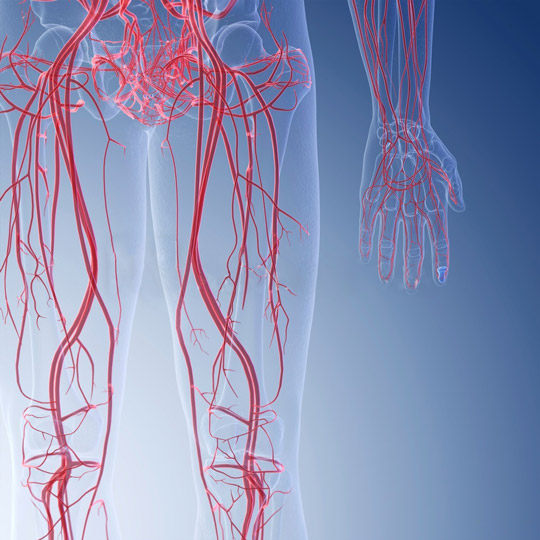Conditions & Diseases
Peripheral Arterial Disease
Peripheral vascular disease involves decreased blood flood to the legs due to narrow or blocked arteries. This may range from mild leg pain to dangerous and painful vascular conditions.
Signs & symptoms
Peripheral vascular disease may not always show symptoms, but for cases that do, a patient may experience:
- Pain, fatigue or cramps in the muscles below the waist (hips, thighs or calf) especially after walking
- Numb, weak or cold legs or toes
- Open wounds or sores on the lower limps that do not heal
Risk factors
- Age (over 50)
- Smoking
- Family history
- High blood pressure
- High cholesterol
- Obesity
- Diabetes
Diagnosis
Peripheral vascular disease may be found during a routine medical exam or during an evaluation once a patient presents with sign and symptoms. Testing may include an ultrasound or angiography.
Treatment
Our practice offers both vascular surgery and interventional radiology (minimally invasive) procedures; therefore, we individually evaluate each peripheral vascular case to determine the most appropriate treatment approach. Our physicians actively participate in research trials, meaning we can often offer treatment approaches not yet available to most patients. Recent advances offer limb-saving noninvasive therapy for patients with severe ischemia who face a possible amputation.


